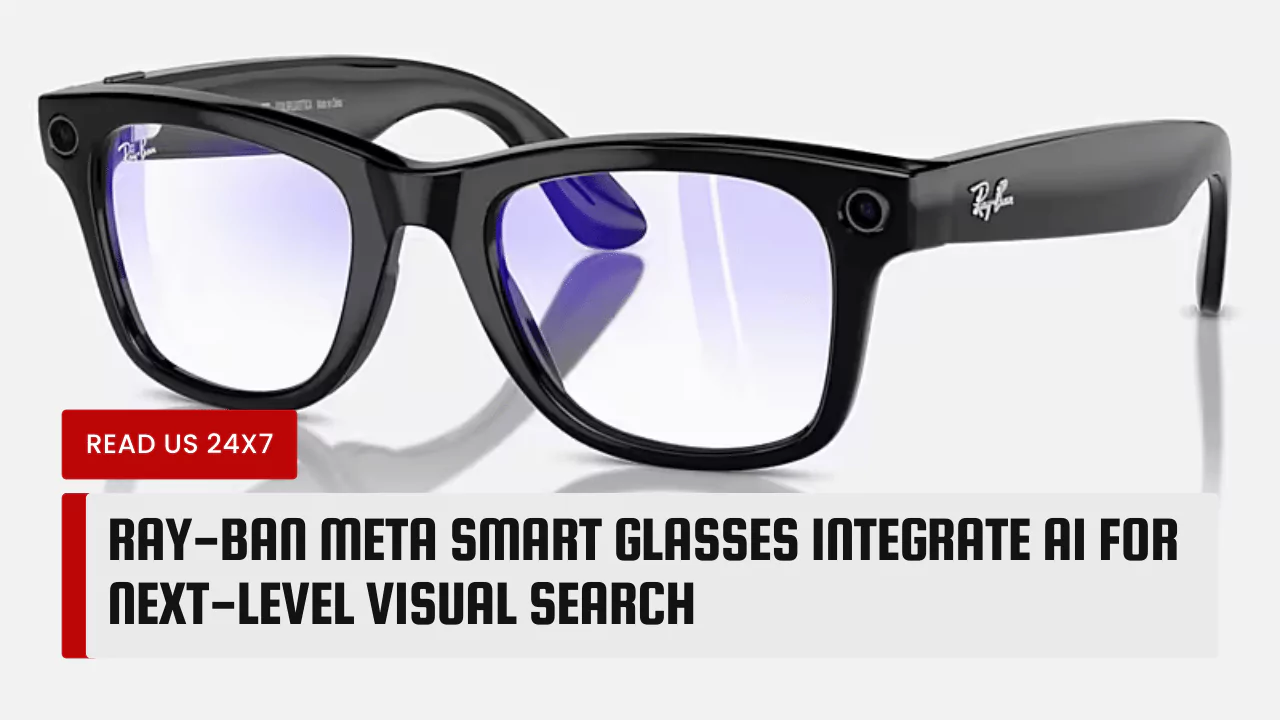If you are looking for a new way to experience the world, you might want to check out the Ray-Ban Meta smart glasses. These are not your ordinary glasses, but a collection of smart glasses that integrate AI for next-level visual search. In this article, we will explore the features, benefits, and upcoming upgrades of these glasses, as well as how to get them.
The Ray-Ban Meta Smart Glasses
The Ray-Ban Meta Smart Glasses, at the intersection of style and technology, offer a range of advanced features. Available in two styles, Wayfarer and Headliner, and boasting an impressive 150 style variations, these glasses cater to diverse preferences.
Equipped with cutting-edge AI capabilities, the glasses include five built-in microphones for clear audio and a 12 MP camera for capturing moments seamlessly. The AI features of the glasses extend to landmark identification, suggesting matching clothes, text translation, image caption display, and more. Users can engage in photo and video capture, live streaming, and enjoy open-ear audio for a connected experience.
Some users commend the glasses for their impressive audio quality, decent image and video capture, and better-than-expected picture quality. However, opinions vary, with concerns raised about privacy issues and perceived feature gaps.
For those interested in the technical aspects, the glasses have a five-mic array designed for enhanced recording capabilities. The redesigned smart glasses charging case not only contributes to the sleek exterior but also serves as a powerhouse charging station, ensuring these smart glasses stay powered all day.
Key Specifications:
- Camera: 5 MP Landscape capture, 12 MP ultra-wide camera for capturing life’s moments with clarity.
- Audio: Standard open-ear speakers and a custom-built speaker, providing 50% louder sound and double the bass.
- Microphones: Three microphones with stereo recording and a five-mic array for immersive audio recording.
- AI Features: Powered by Meta AI, enabling voice control for creative interactions, information access, and device management.
- Livestreaming: Capability to live stream for up to 30 minutes.
Upcoming AI-powered Upgrades
The Ray-Ban Meta smart glasses are not just limited to what they offer right now. They are constantly being updated with new features and improvements that leverage Meta’s AI capabilities. Here are some of the upcoming upgrades that you can expect from these glasses:
- Visual search capabilities: In addition to scanning QR codes or text with your eyes, you will be able to search for anything you see with your camera. For example, if you see a painting in an art gallery or a landmark in an unfamiliar city, you will be able to find out more about it by pointing your camera at it.
- Real-time information access: Besides showing you directions or weather forecasts on your lenses, you will be able to access other types of information as well. For example, if you see someone wearing a specific outfit or accessory that you like or want to buy online, you will be able to find out where they got it from by pointing your camera at them.
- Social sharing: You will be able to share images or videos taken with your camera or sounds played via your speakers straight from your lenses with friends or followers on social media sites like Facebook Messenger, Instagram, WhatsApp, Snapchat, TikTok, and more. Additionally, you will have the option to alter them before sharing them by including text, emojis, stickers, filters, and more.
How to Get the Ray-Ban Meta Smart Glasses?
You can acquire Ray-Ban Meta smart glasses through Ray-Ban.com, official Ray-Ban stores, and certified Ray-Ban dealers, both online and in physical stores. The Meta smart glasses are also available for pre-order on the company website, with prices starting at around $299. To customize your glasses, you can order a complete pair directly from Ray-Ban.com, including options for prescription lenses. Alternatively, you can add prescription lenses at participating LensCrafters stores. The Meta collection is shipped to various countries, including the United States, Canada, United Kingdom, Ireland, Austria, Belgium, France, Italy, Spain, Germany, Finland, Norway, Denmark, Sweden, and Australia, with some regional exclusions.



